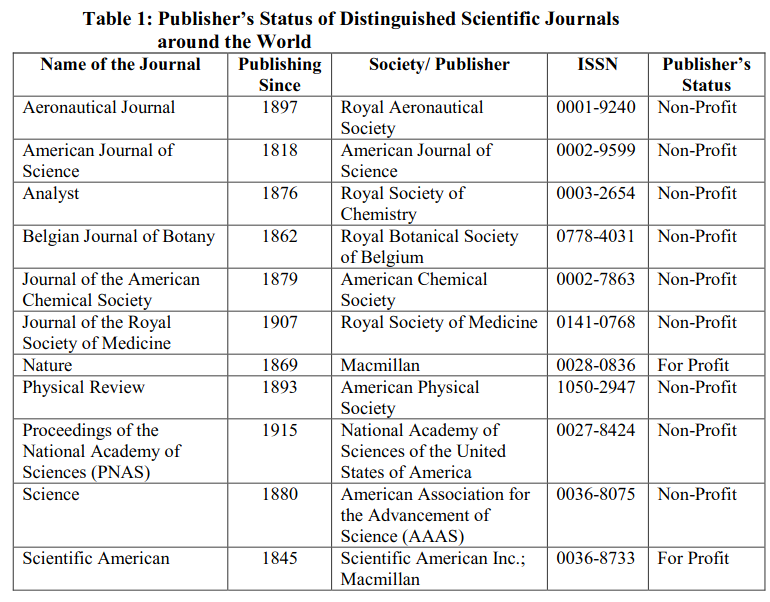1.4 Foundations of Science and Scholarship
Since the nineteenth century, the scholarly communications have been transacted through conferences, books and the scientific periodicals launched by the scientific societies, national science academies and other learned communities. These scientific societies were membership-based and principally supported by the individual contributions of the scientific members. Century old scientific societies are largely non-profit institutions, engaged in creation and dissemination of scientific research. Of late, most of these societies have transferred their journal publishing ventures to the for-profit publishers or business enterprises. Whereas, many other scientific societies still retain their journal publishing activity to primarily engage with qualitative science dissemination and to provide cross-subsidy into their research and training activities. Many of the world’s distinguished scientific journals are surviving for more than a century. So are the scientific societies. They have made deep impact on scientific inquiries, advancement of knowledge, and growth of subject areas. Many of them have facilitated the formation of new scientific disciplines. In the era of online publishing, many of them command higher attention of scientific communities than the newer journals. Table 1 shows a list of some distinguished scientific journals around the world. Some of these journals, although started as non-profit publishing venture, have transformed them into marketable and profitable products of profit-making corporate publishers. On the other hand, some other scientificjournals in the list have remained with the non-profit societies. Their market visibility has been raised remarkably due to publishing high quality research papers, global authorship and global readership. These academic journals also have increased online and social media presence for outreaching to worldwide audiences. These academic journals essentially capture frontiers of science and scholarship. They provide wider avenues of interactions, academic discourses, knowledge creation and knowledge enrichment. Many of these journals led to development of subject specific journals with narrower focus. Some of these journals were bifurcated or trifurcated into different parts or sections to disseminate research findings in more specific subject areas. Delivery mechanism of journal contents was also changed in the late twentieth century. In addition to print edition of academic journals, online editions of these journals were introduced during this time (i.e., late 20th century) to make electronic or online delivery of journal issues and journal articles through electronic journal gateways and journals’ own websites. With this introduction of online delivery, the scholarship became more reachable and instantly accessible to the worldwide audience than earlier times.

